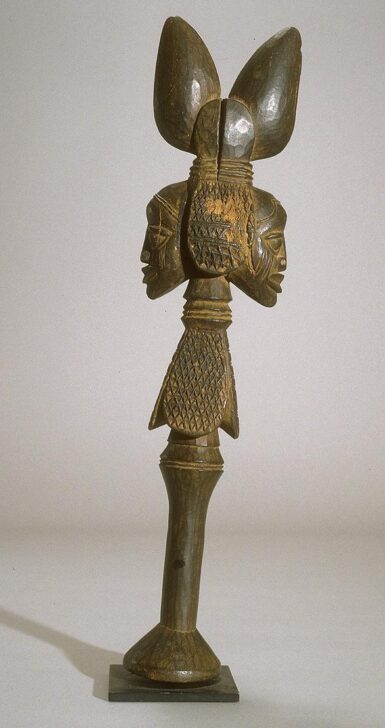Dance Staff
Yoruba

Description
Subject Matter:
Like many other objects related to various Yoruba orisas or gods, the figure in this staff, called oshe Shango, is not the orisa but a depiction of his followers. The god of thunder and lightning, Shango was an ancient king of the Yoruba kingdom of Oyo. The double axe shape at the top of the figures represent neolithic stone celts, thought to be thunderstones hurled to earth by Shango during storms. His hot temperament could be cooled by the good character, or iwa, of his followers, shown here by the calm faces depicted on either side of the staff. When not used by priest or priestess of Shango, who carried the staff in dances during ceremonial events, it would have remained at the shrine for powerful but paradoxical orisa. Thunderstorms, thought to be caused by Shango, brought necessary rain as well as destructive lightning and wind.
References Cited:
Drewal, Henry John, John Pemberton and Rowland O. Abiodun. 1989. Yoruba: Nine Centuries of African Art and Thought. New York: Center for African Art.
Lawal, Babatunde. 2012. Visions of Africa: Yoruba. Milan: 5 Continents Editions.
Thompson, Robert Farris. 1983. Flash of the Spirit: African and Afro-American Art and Philosophy. New York: Random House.
Physical Description:
Wooden staff with a short handle on a small, conical base. There are four oval-shaped protrusions with a pattern of small triangles surmounted by two heads facing opposite directions. Between each head is an oval-shaped panel decorated with a pattern of small triangles. At the top of the staff is a double-axe motif.
Usage Rights:
If you are interested in using an image for a publication, please visit https://umma.umich.edu/request-image/ for more information and to fill out the online Image Rights and Reproductions Request Form.